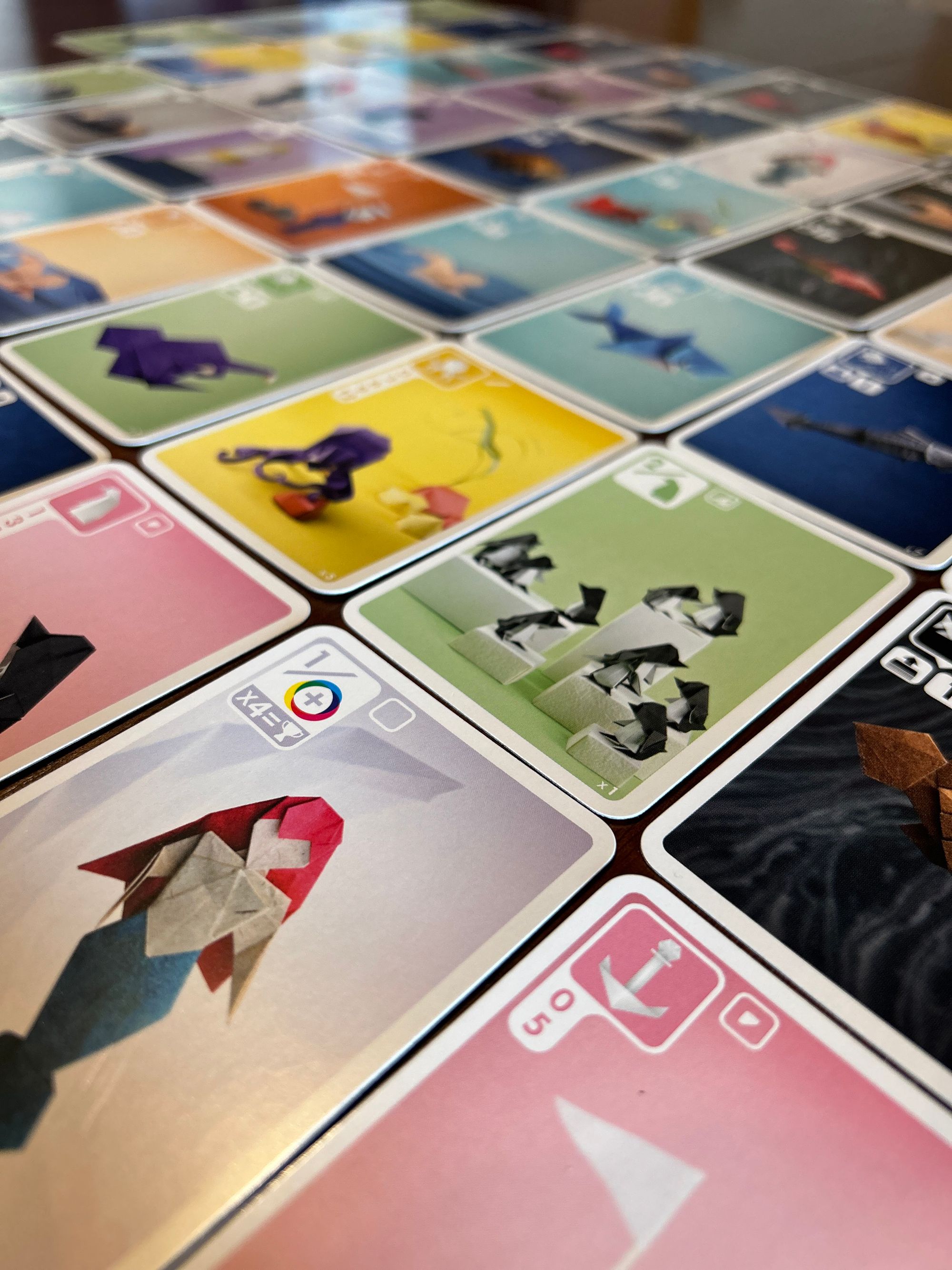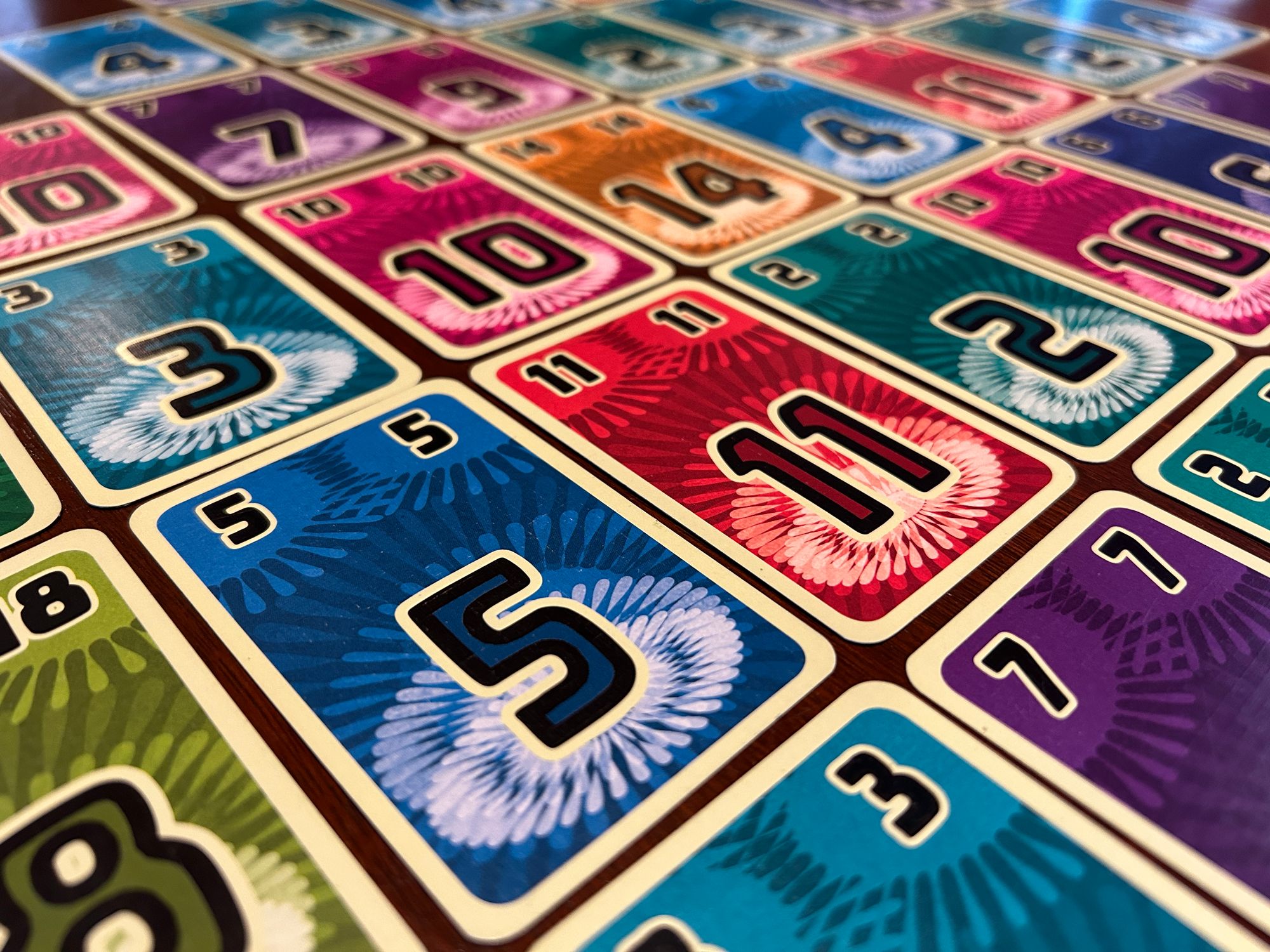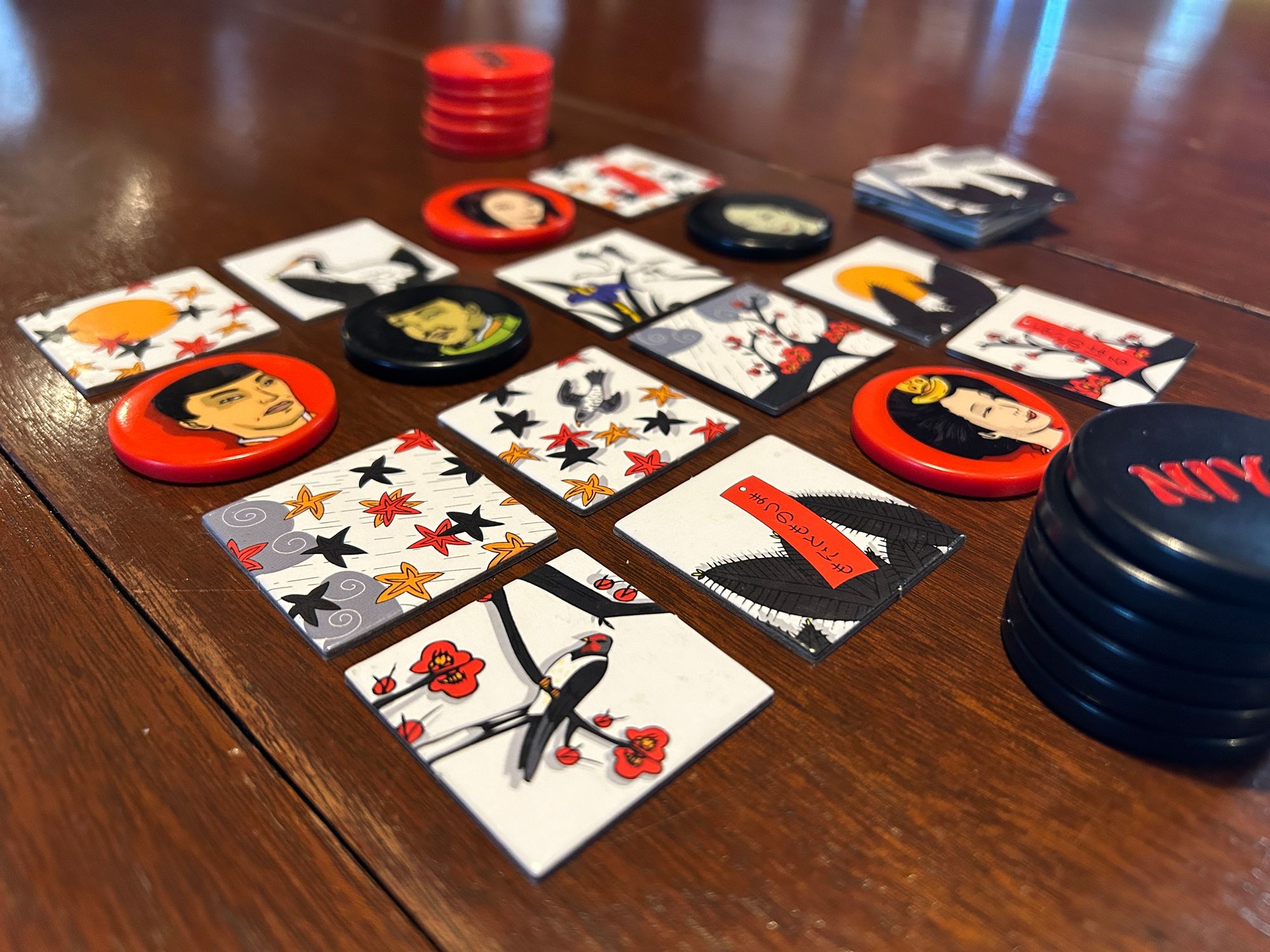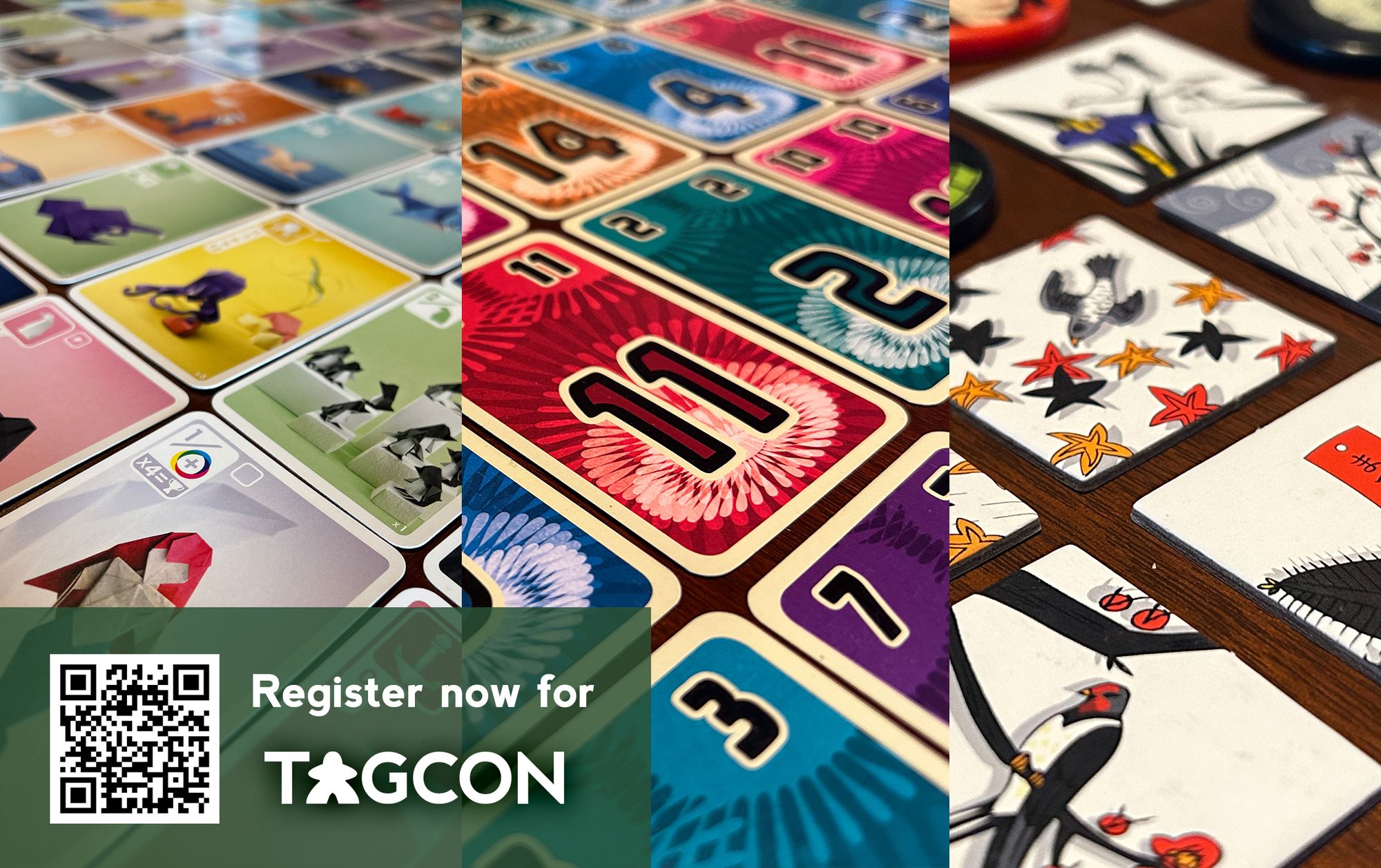There are a lot of games that are fantastic to have in your collection, but because they’re so quick to teach and play, they don’t really warrant a full review on their own. So, I decided to do three quick write-ups of games that are simple to learn, play in under 30 minutes, and are easy to carry around and play wherever you have some spare time and a small amount of space.

Sea Salt and Paper
This is a gorgeous little card game from Bruno Cathala. Every card has a unique photograph of a lovely origami-based diorama. You’re collecting cards to get points in an extremely tranquil 20–30 minutes.
To set up, shuffle the deck and place it between all players. Flip over a card to either side of the deck to make two discard piles. Do not deal cards to players.
On a player’s turn, they may either draw a card from either discard pile into their hand, or draw two cards from the central deck and discard one of them to either of the discard piles. The active player may then play down any pairs they wish, triggering their special abilities. A pair of boats lets you take an extra turn. Crabs let you look through either discard pile and take one card. A fish pair lets you take the top card from the central deck. A shark and a swimmer (the only pairing with two different card types) lets you steal a card from an opponent.
Both played cards and cards in hand are scored. Pairs are worth 1 point each. Set collection cards are worth more points for having more of those cards in a set. Other cards will score points based on having a quantity of certain types of cards.
If the active player has 7 points between played cards and cards in-hand, they can either immediately end the round and let everyone score, or call “last chance,” giving all other players a final round to collect points. Calling “last chance” is a wager, though, requiring the calling player to have the most points once all players total their scores. If they don’t have it, they’ll miss out on a bunch of points; but if they do, they will score significantly more points than their opponents. After scoring, the deck is shuffled and the game continues. Whoever scores 30/35/40 (for 4/3/2 players) first wins.
- Designed by: Bruno Cathala
- Player Count: 2–4
- Playtime: 20–30 minutes
- Time to Learn: 5 minutes
- Complexity: 1.5/5
- Replayability: 4/5
- MSRP: $20

Fuji Flush
Fuji Flush is a great alternative for folks who like to play Uno. There’s enough ‘take that’ to keep it engaging, but it’s nowhere near as debilitating.
The game is made up of a deck of cards ranging in number from 2 to 20 (the lower the value of a card, the more often it appears in the deck). Players are dealt a number of cards based on player count and on their turn, they play one card from their hand. When a card is played, one of three things occurs: If it is the lowest card on the table, play continues to the left. If it is higher than any card on the table, all lower cards are discarded, and the cards’ owners draw a replacement card. If it matches any card on the table, those cards are then grouped as a team, and all cards lower than the combined total of cards on that team are discarded and those owners draw a replacement. For instance, if the cards on the table are 4, 3, and 2 and a 3 is played next, the two 3s become a team of 6 and the 4 and 2 are discarded. On future turns, additional 3s could be played to increase the team value, and cards played that are greater than the total team value discards the entire team.
If a card is still present in front of the active player when their turn begins, they discard their card and do not draw back up. Whoever gets rid of all their cards first wins.
- Designed by: Friedemann Friese
- Player Count: 3–8
- Playtime: 15–20 minutes
- Time to Learn: 2 minutes
- Complexity: 1.0/5
- Replayability: 4.5/5
- MSRP: $20

Niya
Niya is one of the very few games in my collection that I use to regularly introduce people to hobby gaming. It takes 10 minutes to play, 2 minutes to teach. It’s a great game for two people to play while waiting for food, or for more players to arrive.
You start by taking the 16 tiles and setting up a 4x4 grid between players. Each player takes all discs of either red or black. Play begins by one player selecting one tile on the edge of the 4x4 tile grid and replacing it with one of their discs, placing the replaced tile to the side. Their opponent then replaces a tile in the grid with one of their discs in turn, but they must choose a tile that shares one symbol with the tile their opponent removed on their turn. Every tile has two symbols — some combination of elements such as birds or flowers.
Play continues back and forth until one player has four of their discs in a row (orthogonal or diagonal), or a 2x2 square. They also win if their opponent cannot make a play. That’s it. It’s super simple, very quick, and gives folks confidence to learn new games they hadn’t heard of before.
- Designed by: Bruno Cathala
- Player Count: 2
- Playtime: 10–15 minutes
- Time to Learn: 2 minutes
- Complexity: 1/5
- Replayability: 4/5
- MSRP: $12
Written by Brendan Quinn, President of Tri-City Area Gaming. We’re out in the world again! Come play games with us at any of our regular monthly events.
All the links for Tri-City Area Gaming: tcag.carrd.co


